Goa, is a tiny State located
on West Coast of India, spread over in an area of 3610 sq. km.
The State is flanked on the east by Sahyadri Mountains and on
the West with Arabian Sea. The Northern tip of Goa borders
Maharashtra State while Southern area is bordered by Karnataka
State. Goa is a rich treasure of biodiversity. The State of
Goa was ruled by Portuguese for nearly 450 years till it was
liberated in 1961.
For last 50 years of
Liberation, the State has made a remarkable progress in
agriculture sector besides various other spheres of economic
upliftment. The GSDP of Goa stands at Rs. 80,000 per annum.
Though tourism and mining are at forefront in terms of
employment generation, agriculture has been providing
livelihood support to almost 12 Lakhs of the population. The
Agriculture along with Forests in Goa is instrumental in
keeping Goa green and cover nearly 65% of the total area of
the State.
At the time of liberation,
nearly 70% of the population was involved in agriculture as
their full time occupation. Paddy was the predominant crop of
the State followed by Cashew and Coconut. The cropping pattern
is changing and today, we have Cashewnut which is cultivated
in nearly 55,000 Ha with paddy covering about 31.000 Ha. The
cultivation of horticultural crops is gaining importance due
to the better returns, lower risk and tolerance of these crops
for part time farming. |
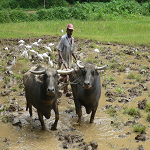
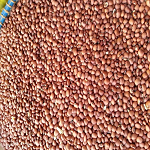
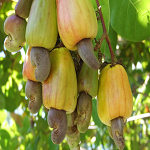
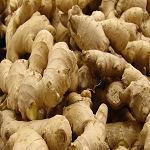
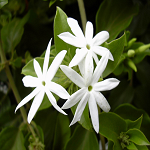
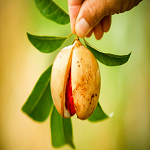
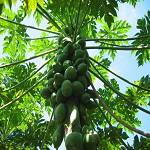
.png)
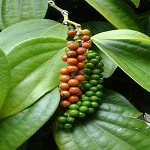

 |
| Goa receives rain from the South -
West monsoons. The average rainfall is 2800 mm. rainy season
is spread over four months from June to September. Occasional
thunder showers are experienced in May and October. Goa
experiences warm and humid tropical climate. The summer
temperature ranges from 24° C to 36° C. In winter, the
mercury hovers between 21°C and 30°C. |
| The average relative humidity is
75.90%. |
| In Goa, the land elevation ranges from
sea level to 1,022 meters. The highest point is the Wagheri
Hills in Sattari taluka. The Ghat section of NH-4, rises to
650 meters MSL near Anmod. |
| The soils of Goa are mostly lateritic
(81%). They are sandy loam to silt-loam in texture, well
drained and highly acidic (5.5 to 6.5 pH). These soils have
moderate organic carbon and are poor in potash. About 11% of
the soils located along the seacoast and esturaries are
sandy-to-sandy loams. They include the Ker lands and beach
fronts. The remaining 8% of the soils are alluvial in nature.
The Khazans and adjoining areas have alluvial soil with high
water tables and are subject to inundation by saline water. |
1.Khazan Land: It
consists of low- lying areas, of ten below sea level along the
estuaries. This land is used for monsoon paddy crops followed
by Rabi Vegetables, In limited areas, pisciculture is also
done by regulating flow of water
2.Ker
Land: This is flat land at low elevation above sea level and
having a high water table. Aerable, sandy to sandy loams soils
fir for multiple cropping through irrigation. Rabi paddy
vegetables, pulses, etc. are grown in these areas.
3.Morod Land: It refers to upland or
terraced field suitable for Horticultural/Plantation crops or
single rain fed crop of rice. |
| In Goa traditional sources of
irrigation were storage tanks, small Diversion bandharas,
natural springs and wells. For rabi paddy (vaigon) Irrigation
was mostly from storage tanks located in Salcete and Bardez.
The usual practice is to cultivate kharif paddy in tank bed
and the water weir is closed early in September after harvest
of Kharif paddy. In Ponda, Sanguem and Bicholim small kuccha
"diversion" works are constructed on Nallas to irrigate paddy
fields during Rabi. Considerable area under arecanut depends
on various springs at higher altitudes. After Liberation of
Goa, a number of Government "lift irrigation schemes" were
commissioned. Irrigation wells were also opened. Further
commissioning of Salaulim Irrigation Project at Sanguem and
Anjunem Irrigation Project, State has added to irrigate an
area of more than 10,000 ha. |
Fruits: Mango,
Cashew, Coconut, Banana, Pineapple, Jackfruit, Arecanut etc.
Field crops: Paddy, Ragi,
Sugarcane, Groundnut, Cowpea etc.
Vegetables:
Brinjal, Bhendi , Chillies, Cucumber, Pumkin, Gourds, Musk
Melons, Red amaranthus, Raddish, Knol-Khol, Cabbage, Bottle
gourd, Long beans, Cluster beans etc.
Flowers:
Jasmine, Crossandra, Dahlia, Hibiscus, Marigold, Orchids,
Gerbera, Anthuriums, Gladiolus, etc.
Spices:
Black Pepper, Nutmeg, Kokum, Turmeric, Cinnamon, etc.
Tubers: Colocasia, Yam, Elephant
foot, Dioscorea, Sweet Potato, etc |
| The State of Goa is providing
assistance to agriculture at all levels to provide substantial
returns to rural people. The Department of Agriculture
provides assistance for farmer from land preparation to the
extent of marketing of the produce. The Department of
Agriculture with its head quarter at Tonca, Panaji implements
developmental programme through Zonal Agricultural Offices
located in each taluka of Goa. The Department has plant
production centres in their agricultural farms. Machinery
provision centres at the Taluka Level and Training Centre at
District Level. The Soil Testing Laboratories are located at
district level where soil health cards are issued for major
and micro nutrients Being a progressive state the farmers face
tremendous shortage of manual labour. The dependence on
machines for activities agriculture is the emerging trend. The
land holding of farmers of Goa is small and nearly 80% of
farmers own less than 1 ha. of land. The smaller machines are
preferred and government provides financial assistance for
such machines. The Government promotes large scale cultivation
of various crops for which assistance for seed, pesticides,
manures besides land preparation is provided. Goa is perhaps
the only State where the farmers are assured of the price for
their produce. The State provides assurance of support price
in case of paddy, coconut, arecanut, oilpalm, sugarcane which
safeguard the farmers against any losses due to collapse in
market price to keep farming at its prime level. The farmers
are provided assistance at the taluka level which are located
at Pernem, Bardez, Bicholim, Sattari, Tiswadi, Sakhali,
Salcete, Ponda, Sanguem, Canacona, Quepem & Dharbandora. |
| Processing adds value to Agriculture
produce. Cashew kernel processing, Feni extraction are
important agro industry with Fruit processing like Mango,
Kokum, Jamun supporting the sector. Agro cottage industries
making Papad, Pickles, Medicine, Masala etc. are also coming
up. |
| The marketing of the Agriculture
produce is done in the Govt. market Yards, Co-operative
societies, Private dealers, local market etc. |
| Goa is famous for tourism all over the
world. It is picking up as one of the preferred agro eco
tourism destination Farmers having Agriculture as base with
spice plantation / horticulture plantation, floriculture and
nature resources like rivers, ponds, rich biodiversity,
jungles with various flora and fauna, adventurous sports,
healthy and peaceful environment with entertainment are
venturing in to this business along with Agriculture. Visitors
& tourists also prefer this as they have a relaxing place
where they can refresh themselves over a weekend. |
|
|